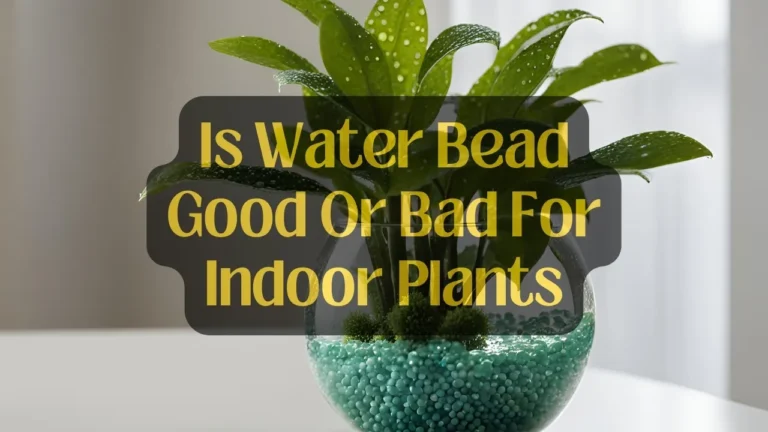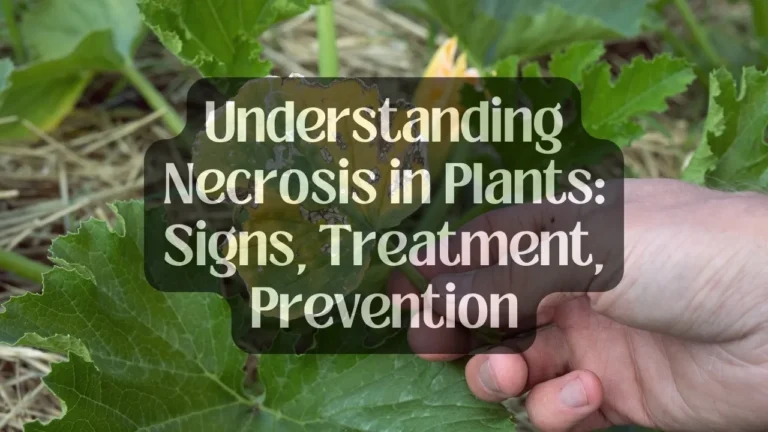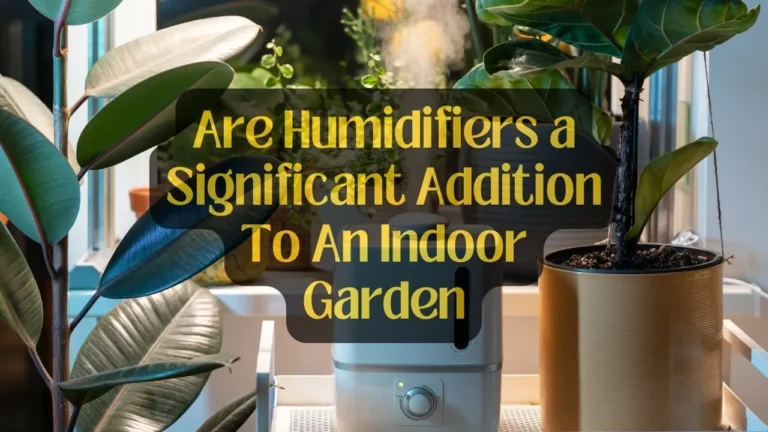Discover All the Reasons Why Leaf Scorch on Houseplants

Ever notice those unsightly brown or yellow edges creeping up on your houseplant leaves? It’s not your fault (probably)! This is called leaf scorch, and it happens to the best of us plant parents.
So, what are the reasons for leaf scorch? The sneaky reasons behind leaf scorch are dry air from winter heaters, underwatering or overwatering, and even too much fertilizer (it acts like a roadblock for the plant’s water, leading to scorched leaves). We’ll also dive into some less obvious causes to turn you into a plant detective!
Ready to banish leaf scorch for good? Keep reading for tips on how to prevent it and keep your houseplant happy and healthy!
What is Leaf Scorch on Indoor Plants?

As a plant parent, you may have noticed unsightly brown or yellow edges on the leaves of your beloved indoor greenery. This condition is known as leaf scorch, and it can be a frustrating sight for those who take pride in their lush, vibrant houseplants.
Research performed by the Minnesota Horticultural Society claims that too much sun and an inappropriate environment are to blame for such leaf conditions.
But fear not, for with a little understanding and care, this problem can be remedied, and your plant babies can thrive once more.
3 Core Reasons Why Indoor Plants Suffer from Leaf Scorch
Leaf scorch is often a symptom of an underlying issue, rather than a standalone problem. Several potential culprits could be causing your plants to display this unsightly discoloration. Let’s explore all the potential reasons.
Low Humidity to Blame First
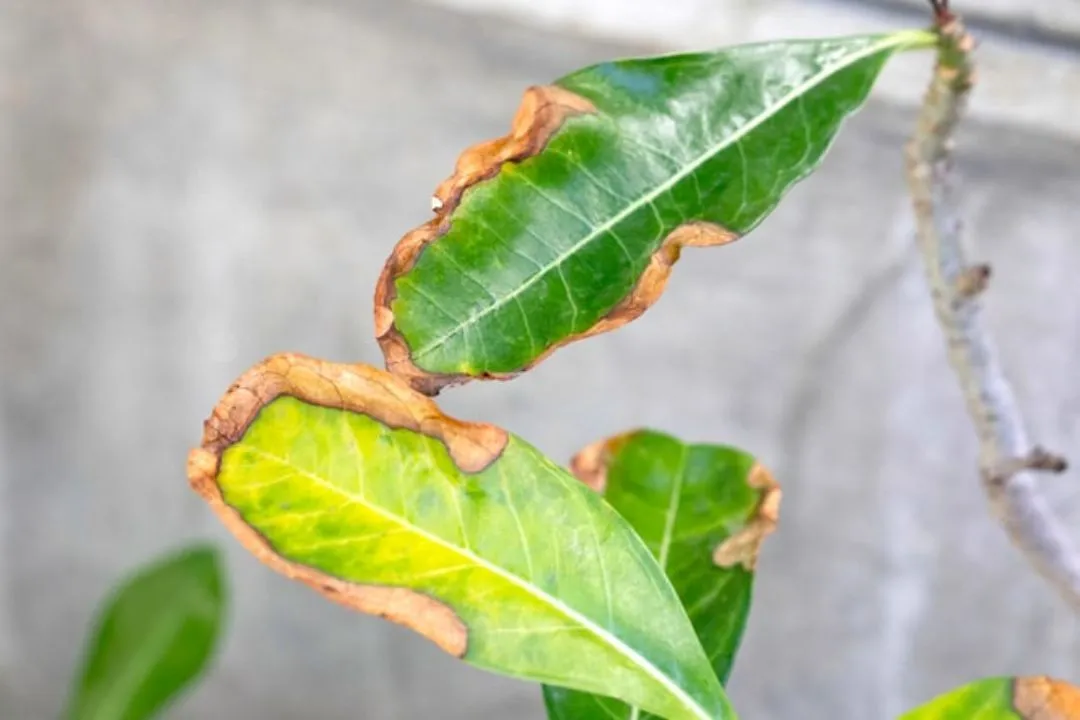
Houseplants love moisture in the air, especially ones from steamy jungles. In winter, when heaters are blasting, our homes get drier. This makes it tough for these plants to hold onto their moisture, and the edges of their leaves turn brown or yellow because they’re drying out. It’s like they’re getting a little crispy!
Could Inconsistent Watering Be to Blame?

Just like Goldilocks, plants prefer their watering habits to be “just right.” If you’re guilty of either underwatering or overwatering your plants, leaf scorch can rear its ugly head.
Inconsistent watering can cause the plant to become stressed, leading to dehydration and the telltale signs of scorched leaves.
Too Much Fertilizer
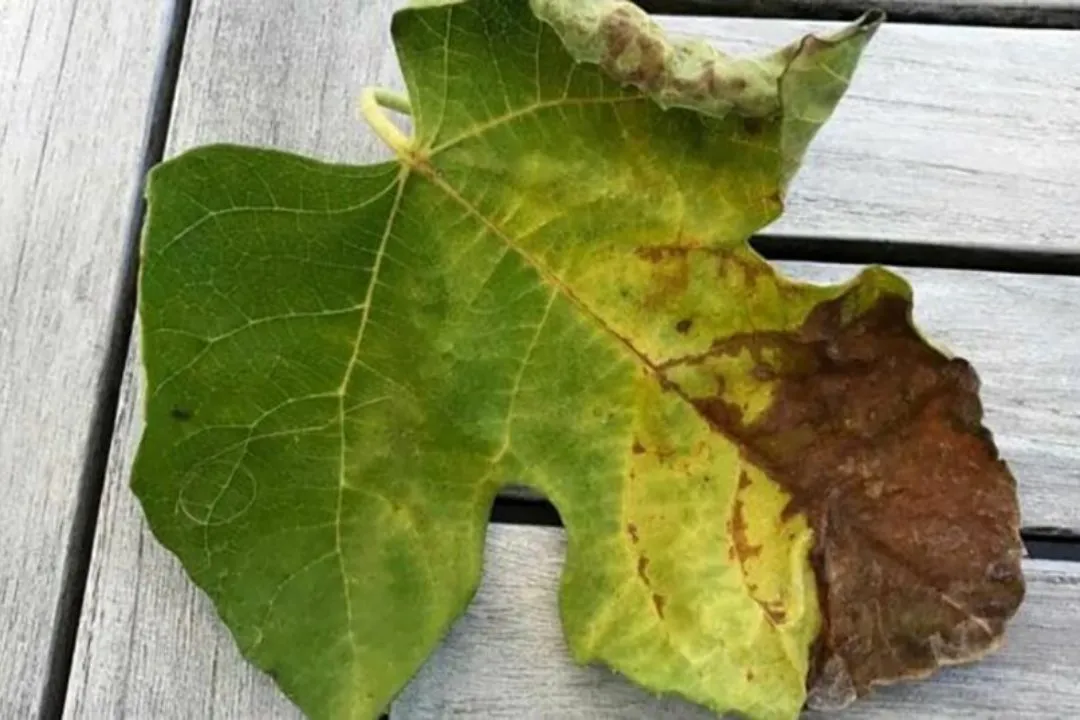
While fertilizers provide essential nutrients for optimal plant growth, excessive application can lead to detrimental effects. Fertilizer salts can accumulate in the soil, hindering water uptake from both roots and leaves. This can manifest as leaf scorch and tip burn, ultimately compromising plant health.
4 Extended Reasons That Can Contribute to Leaf Scorch
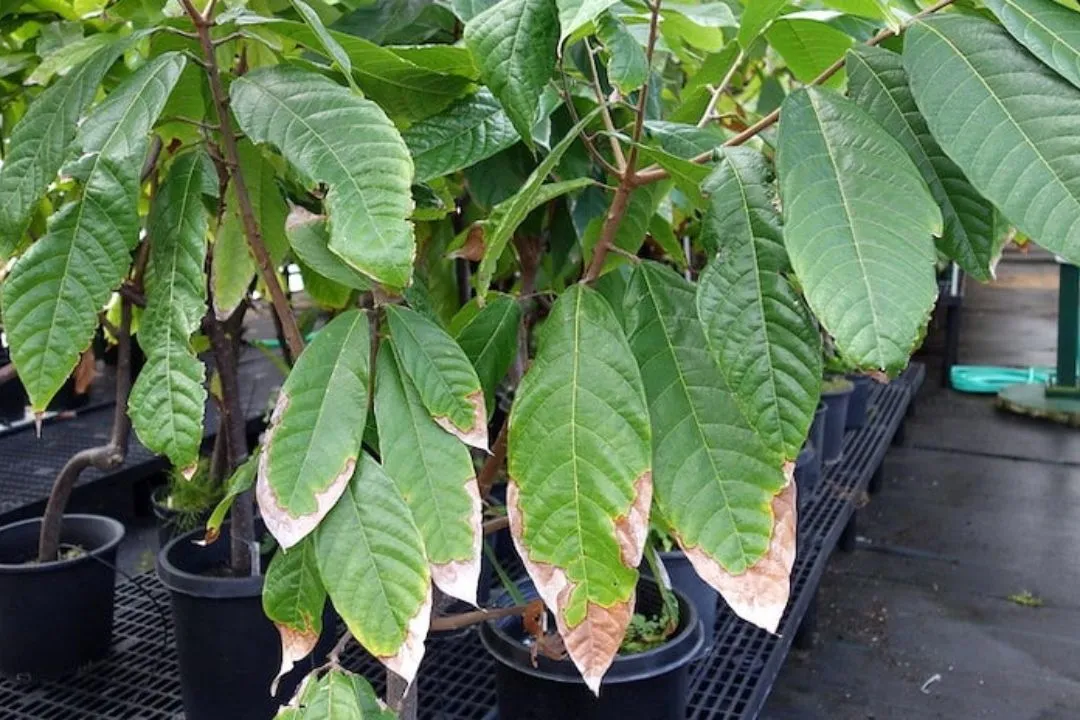
The following reasons don’t bother your houseplant in general. But it’s not impossible. So, I want you to be careful about these reasons. Let’s take a look.
Suboptimal Growing Conditions
Inappropriate soil composition, such as excessive sand or gravel drainage, can limit water retention and root development. Additionally, physical obstructions hindering root growth or prolonged exposure to drafts can exacerbate water stress, manifesting as leaf scorch.
Entomological Infestations
Sap-sucking pests like aphids and spider mites can directly damage foliage, leading to discoloration and necrosis (tissue death) at the leaf margins, commonly referred to as leaf scorch.
Pathological Influences
Fungal or bacterial diseases can disrupt a plant’s vascular system, hindering water uptake and transport. This compromised water flow can manifest as leaf scorch.
Environmental Fluctuations
Sudden temperature changes or exposure to frost can induce rapid dehydration in plant tissues, resulting in leaf scorch.
How to Fix Leaf Scorch?
No such cure sadly. You need to take preventative measures to keep your plants thriving well. Still, if your plant seems to experience leaf scorch, the following measures might be taken.
Minor Leaf Damage
If only a small portion of the leaf exhibits scorch and the plant displays healthy growth and proper hydration, intervention is unnecessary. The plant will naturally reabsorb nutrients from the healthy parts of the leaf, leaving the scorched area.
Severely Affected Leaves
In instances where entire leaves have become completely brown and dry, prompt removal is recommended. This prevents the spread of potential pathogens that could compromise healthy foliage. Utilize sterilized pruning shears to carefully remove the affected leaves at the base, ensuring minimal disruption to healthy tissues.
Strategic Pruning
For leaves with extensive scorch damage, consider strategic pruning. This technique involves removing the scorched portions while preserving healthy green areas. This minimizes stress on the plant and allows it to redirect resources towards new growth.
Light Adjustment
Often, excessive light exposure contributes to leaf scorch. Evaluate the current lighting conditions. If your plant receives direct sunlight, relocate it to a location with filtered light. This provides adequate illumination without the detrimental effects of harsh rays.
4 Expert Tips to Prevent Leaf Scorch on Indoor Plants
Of course, an ounce of prevention is worth a pound of cure. To keep your indoor plants healthy and vibrant, follow these simple guidelines:
- Research Your Plant’s Specific Needs Different plant species have varying requirements when it comes to humidity, watering, and fertilization. Take the time to understand the unique needs of each plant in your collection, and tailor your care routine accordingly.
- Monitor Environmental Conditions Pay close attention to the humidity levels, temperatures, and air circulation in your home, and make adjustments as needed to create an optimal environment for your plants.
- Establish a Consistent Care Routine Consistency is key when it comes to plant care. Stick to a regular watering and fertilization schedule, and make it a habit to inspect your plants for signs of stress or pests.
- Quarantine New Plants Before introducing new plants to your existing collection, isolate them for a period of time to ensure they are free of pests or diseases that could spread to your other plants.
FAQs
Let’s have a look at the following Q&A. I hope that’ll help you to dive into the matter a little deeper.
Q: What indoor plant species are most susceptible to leaf scorch?
Some indoor plant varieties that are particularly prone to leaf scorch include calatheas, prayer plants, Chinese evergreens, and fiddle-leaf figs. These tropical plants thrive in high humidity and can struggle in dry indoor environments.
Q: Is leaf scorch contagious between plants?
No, leaf scorch itself is not a contagious condition. However, if it is caused by a pest infestation or disease, those issues could potentially spread to other plants if not treated properly.
Q: Can leaf scorch be a sign of nutrient deficiency in plants?
Yes, certain nutrient deficiencies, such as a lack of potassium or magnesium, can sometimes manifest as leaf scorch or discoloration. Providing a balanced fertilizer may help correct the issue.
Conclusion
With a little TLC, you can help your houseplant recover from leaf scorch and thrive again. Remember, these leafy friends are like our indoor companions – a little understanding and a few adjustments can go a long way!
By providing the right amount of light, and water, and avoiding harsh chemicals, you can create a happy home for your plant and enjoy its beauty for years to come.



